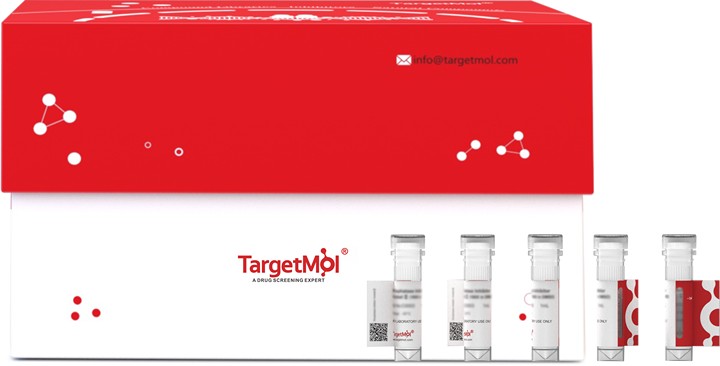 您的购物车当前为空
您的购物车当前为空
LTBR Protein, Human, Recombinant (His)
一键复制产品信息货号 TMPJ-00274
Tumor necrosis factor receptor superfamily member 3, also known as Lymphotoxin-beta receptor,Tumor necrosis factor C receptor,Tumor necrosis factor receptor 2-related protein,Tumor necrosis factor receptor type III,LTBR,TNFCR, TNFR3 and TNFRSF3, is a member of the tumor necrosis factor (TNF) family of receptors. LTBR is a single-pass type I membrane protein and contains four TNFR-Cys repeats. It is expressed on the surface of most cell types, but not on T and B lymphocytes. LTBR and its ligand play a role in the development and organization of lymphoid tissue and transformed cells. Activation of LTBR can trigger apoptosis. In addition, LTBR can lead to the release of the cytokine interleukin 8.

LTBR Protein, Human, Recombinant (His)
一键复制产品信息货号 TMPJ-00274
Tumor necrosis factor receptor superfamily member 3, also known as Lymphotoxin-beta receptor,Tumor necrosis factor C receptor,Tumor necrosis factor receptor 2-related protein,Tumor necrosis factor receptor type III,LTBR,TNFCR, TNFR3 and TNFRSF3, is a member of the tumor necrosis factor (TNF) family of receptors. LTBR is a single-pass type I membrane protein and contains four TNFR-Cys repeats. It is expressed on the surface of most cell types, but not on T and B lymphocytes. LTBR and its ligand play a role in the development and organization of lymphoid tissue and transformed cells. Activation of LTBR can trigger apoptosis. In addition, LTBR can lead to the release of the cytokine interleukin 8.
| 规格 | 价格 | 库存 | 数量 |
|---|---|---|---|
| 5 μg | ¥ 197 | 6-8日内发货 | |
| 10 μg | ¥ 300 | 6-8日内发货 | |
| 20 μg | ¥ 482 | 5日内发货 | |
| 50 μg | ¥ 940 | 5日内发货 | |
| 100 μg | ¥ 1,630 | 5日内发货 | |
| 200 μg | ¥ 2,860 | 5日内发货 | |
| 500 μg | ¥ 6,080 | 5日内发货 | |
| 1 mg | ¥ 8,700 | 5日内发货 |
大包装 & 定制
加入购物车
TargetMol 的所有产品仅用作科学研究或药证申报,不能被用于人体,我们不向个人提供产品和服务。请您遵守承诺用途,不得违反法律法规规定用于任何其他用途。
资源下载
产品信息
| 生物活性 | Activity has not been tested. It is theoretically active, but we cannot guarantee it. If you require protein activity, we recommend choosing the eukaryotic expression version first. |
| 产品描述 | Tumor necrosis factor receptor superfamily member 3, also known as Lymphotoxin-beta receptor,Tumor necrosis factor C receptor,Tumor necrosis factor receptor 2-related protein,Tumor necrosis factor receptor type III,LTBR,TNFCR, TNFR3 and TNFRSF3, is a member of the tumor necrosis factor (TNF) family of receptors. LTBR is a single-pass type I membrane protein and contains four TNFR-Cys repeats. It is expressed on the surface of most cell types, but not on T and B lymphocytes. LTBR and its ligand play a role in the development and organization of lymphoid tissue and transformed cells. Activation of LTBR can trigger apoptosis. In addition, LTBR can lead to the release of the cytokine interleukin 8. |
| 种属 | Human |
| 表达系统 | HEK293 Cells |
| 标签 | C-6xHis |
| 蛋白编号 | P36941 |
| 别名 | Tumor Necrosis Factor Receptor Type III,Tumor Necrosis Factor Receptor Superfamily Member 3,Tumor Necrosis Factor Receptor 2-Related Protein,Tumor Necrosis Factor C Receptor,TNFR-III,TNF-RIII,TNFR3,TNFCR,T,Lymphotoxin-β Receptor,Lymphotoxin-Beta Receptor,LTBR,D12S370 |
| 氨基酸序列 | Gln31-Met227 |
| 蛋白构建 | Gln31-Met227 |
| 蛋白纯度 | Greater than 95% as determined by reducing SDS-PAGE. (QC verified) |
| 分子量 | 29-40 KDa (reducing condition) |
| 内毒素 | < 0.1 ng/µg (1 EU/µg) as determined by LAL test. |
| 缓冲液 | Lyophilized from a solution filtered through a 0.22 μm filter, containing 20 mM PB, 150 mM NaCl, pH 7.4. |
| 复溶方法 | Reconstitute the lyophilized protein in distilled water. The product concentration should not be less than 100 μg/ml. Before opening, centrifuge the tube to collect powder at the bottom. After adding the reconstitution buffer, avoid vortexing or pipetting for mixing. |
| 存储 | Lyophilized powders can be stably stored for over 12 months, while liquid products can be stored for 6-12 months at -80°C. For reconstituted protein solutions, the solution can be stored at -20°C to -80°C for at least 3 months. Please avoid multiple freeze-thaw cycles and store products in aliquots. |
| 运输方式 | In general, Lyophilized powders are shipping with blue ice. Solutions are shipping with dry ice. |
| 研究背景 | Tumor necrosis factor receptor superfamily member 3, also known as Lymphotoxin-beta receptor,Tumor necrosis factor C receptor,Tumor necrosis factor receptor 2-related protein,Tumor necrosis factor receptor type III,LTBR,TNFCR, TNFR3 and TNFRSF3, is a member of the tumor necrosis factor (TNF) family of receptors. LTBR is a single-pass type I membrane protein and contains four TNFR-Cys repeats. It is expressed on the surface of most cell types, but not on T and B lymphocytes. LTBR and its ligand play a role in the development and organization of lymphoid tissue and transformed cells. Activation of LTBR can trigger apoptosis. In addition, LTBR can lead to the release of the cytokine interleukin 8. |
引用文献
技术支持
请阅读 重组蛋白用户指南 了解更多具体信息.





 |
|